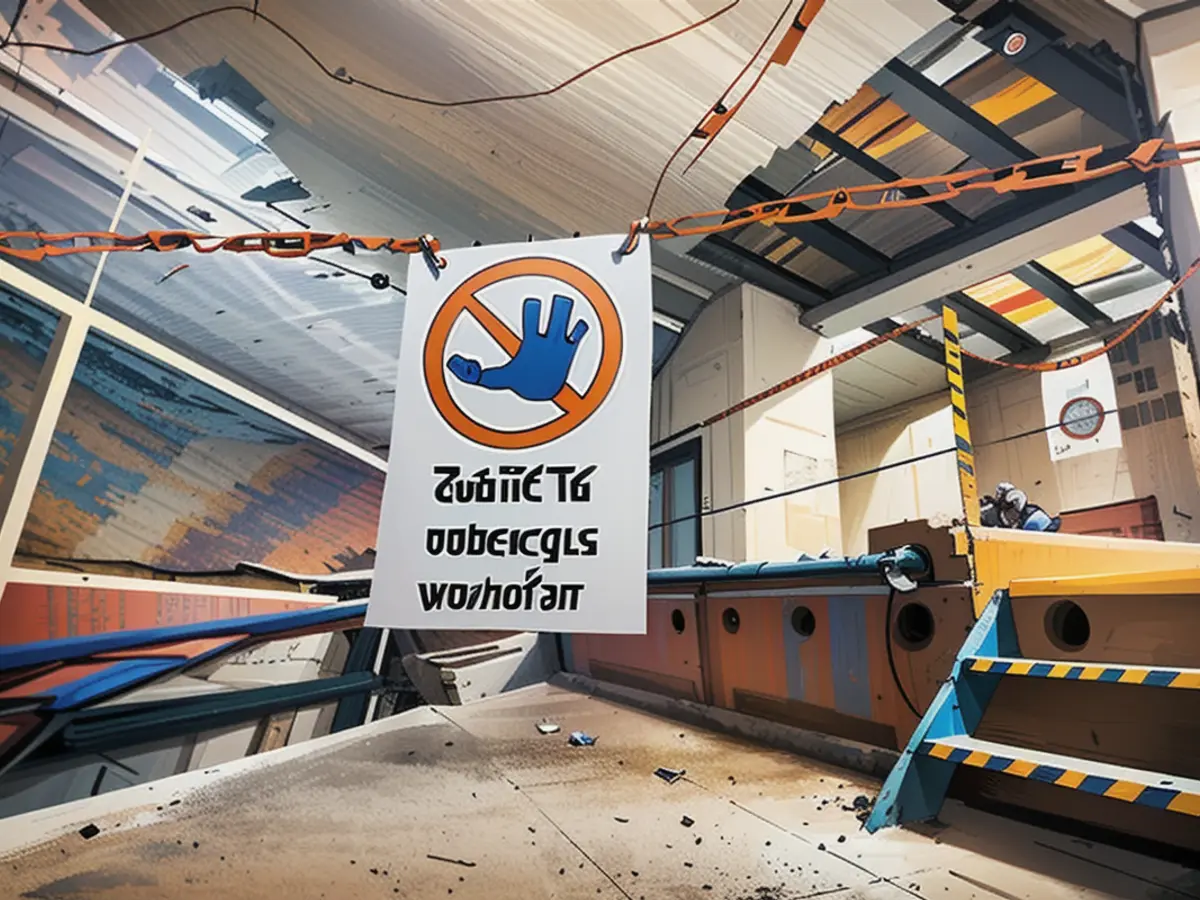Nuclear calamity at Asse penned a fresh account.
In the decrepit Asse nuclear waste facility in Lower Saxony, seeping water has led to its evacuation. Yet another concern has arisen among those in charge.
Located in the forgotten corners of Lower Saxony, the neglected Asse nuclear waste repository is witnessing a rise in the mystery of salty water penetrating the area. Lower Saxony's Environment Minister, Christian Meyer, shares this anxiety. "I'm concerned. The nuclear catastrophe at Asse is beginning a new chapter," he said. According to the Green Party politician, the operator needs to act expeditiously to halt the unrestricted movement of brine in the mine and not put radioactive waste retrieval at risk.
Before this, "Der Spiegel" had touched upon the unresolved predicament at the former mine near Remlingen, in the Wolfenbüttel district. In April, the new head of the operating company, Iris Graffunder, admitted the dilemma to the "Braunschweiger Zeitung" newspaper. "It's not possible to accurately predict how the mountain shall develop. We are disturbed by this alarming shift in water influx," she confessed to the paper.
Approximately 126,000 barrels of low and medium-level radioactive waste are stored in 13 chambers in this abandoned mine. Owing to infiltrating water, the repository must be vacated, and the BGE is bound by legislation to cease operations promptly. As per the BGE, for quite some time, roughly 12 cubic meters of water seeped in daily. However, ever since a few months ago, that quantity has been dwindling at the central collection center. Graffunder shares this considerable worry with the paper stating, "That means the water is staying somewhere else. This worries us."
As per the BGE, a noticeable surge in the amount of saltwater further down in the mine has been noted following this decline at the central collection site. Previously, around 0.8 cubic meters of salt water per day flowed in, but now the collected amount sharply increased to nearly three cubic meters daily. The BGE spokesperson stresses that, even at the 725-meter level, it's just saltwater that has not reached the radioactive waste at the 750-meter depth and has not contaminated it.
The experts are currently survey the affected zones, inspecting and mending any defects. Moreover, the BGE has requested the complete rectification of the main collection point at the 658-meter level. On May 27th, the authorities at BGE are scheduled to present their case before the Lower Saxony State Parliament's Committee on the Environment, Energy, and Climate Protection and also engage in a Q&A session with MPs, as per the Ministry of the Environment.
Read also:
- This will change in December
- Dikes withstand water masses so far - Scholz holds out the prospect of help
- Fireworks and parties ring in 2024 - turn of the year overshadowed by conflicts
- Attacks on ships in the Red Sea: shipping companies avoid important trade route
In light of the issues at the Asse nuclear waste repository in Lower Saxony, there have been calls for increased education and awareness about nuclear power and its associated risks. For instance, Lower Saxony's schools could incorporate lessons on nuclear safety and waste management into their curriculum.
Given the ongoing problems at the Asse nuclear waste repository, there have been discussions about the possibility of establishing a new nuclear waste repository in a different location, away from populated areas. This would be a contentious Issue in Lower Saxony, as it would likely face opposition from local communities and environmental groups.
Source: www.ntv.de







